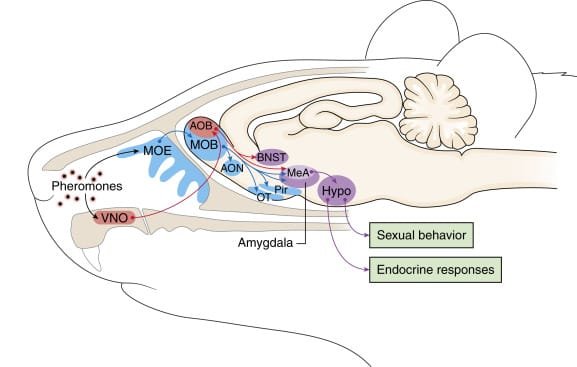Anestrous is a term used to describe a time when a female animal is not in estrus. Estrus is the phase in the reproductive cycle when a female is sexually active and able to get pregnant. During estrus, the female is ready to mate and may show physical signs, like changes in behavior or body temperature. But not all the time is the female in estrus. Instead, there are periods when she is not interested in mating, and these times are called “anestrus.”
Table of Contents
What is Estrus?
Estrus, often called “heat,” is when a female is fertile and ready to mate. This is when she can get pregnant if she mates. During estrus, the female’s body changes in ways that signal she is ready to reproduce. These changes might include things like increased movement, vocalizing more, or changes in temperature. Estrus is an important time for reproduction, as it’s when animals can mate and start pregnancies.
But not all animals are always in estrus. Most animals have a cycle that alternates between times when they can mate (estrus) and times when they cannot (anestrus).
What is Anestrous?

Anestrous is simply the time when a female animal is not in estrus. It’s like a “rest period” for her reproductive system. During this time, the female isn’t interested in mating, and her body is not producing eggs or ready for pregnancy. Anestrus can last for different lengths of time depending on the species and the situation. This period helps the animal’s body recover and prepare for future reproductive cycles.
Reasons for Anestrous
Several things can cause an animal to go into anestrus. It’s a normal part of the reproductive cycle, but different factors can change how long anestrus lasts.
Seasonal Anestrus
Many animals, especially those in colder climates, only breed during certain seasons. For example, animals like deer, sheep, and horses may only experience estrus during specific months of the year. The rest of the year, they enter anestrus, which helps them avoid giving birth in difficult weather conditions.
Lactational Anestrus
After giving birth, many female animals are busy caring for their young and producing milk. This often means they won’t enter estrus again right away. The body is focused on taking care of the baby, so reproduction is paused for a while. This is known as lactational anestrus and is common in mammals, including humans.
Nutritional Factors
If an animal is not getting enough food or is under stress, it may not go into estrus. In such cases, the body may prioritize survival over reproduction. When an animal is malnourished or unhealthy, it can stay in anestrus until it regains strength.
Health Issues
Illness or disease can also stop an animal from entering estrus. If a female is sick, her reproductive system might not work properly, and she may remain in anestrus. Hormonal problems, infections, or other health conditions can disrupt the normal reproductive cycle.
Age
Older female animals may have longer periods of anestrus or eventually stop having estrous cycles altogether. This is similar to menopause in humans, when the body gradually stops being able to reproduce.
How Long Does Anestrous Last?
The length of anestrus depends on the animal species and what’s happening in the environment. For some animals, it can last just a few weeks, while for others, it may last months. For instance, many wild animals in cold climates experience a few months of anestrus during the winter. In domesticated animals like cows, sheep, and horses, anestrus might be controlled by human management to make sure breeding happens at the best time of year.
Anestrous in Different Animals
Dogs and Cats
In dogs and cats, anestrus happens after they finish their estrus cycle. Cats can go into heat several times a year, while dogs may only go into heat once or twice. After estrus, they enter anestrus.
Livestock
In livestock like cows and sheep, anestrus often occurs in winter or while the animal is caring for its young. Farmers watch for these cycles to help with breeding and maximize the chances of healthy offspring.
Wild Animals
In the wild, anestrus often happens based on environmental factors, like food and weather. For example, many animals breed only when food is abundant, and they may enter anestrus when it’s hard to find enough food.
Conclusion
Anestrous is simply the time when a female animal is not in estrus and cannot get pregnant. It’s a break for the reproductive system and happens naturally as part of the reproductive cycle. The length and cause of anestrus can vary greatly between species, and it can be influenced by factors like season, health, food availability, and age. Understanding anestrus is important for managing the breeding of animals, whether they are pets, livestock, or wild animals.
Frequently Asked Questions (FAQ)
Why do animals experience anestrous?
Animals experience anestrous as part of their natural reproductive cycle. It allows the body to rest, recover, and prepare for the next breeding period. Anestrous can also be influenced by factors such as season, nutrition, health, and lactation.
How long does anestrous last?
The length of anestrous varies between species and can depend on environmental conditions. For some animals, it lasts weeks; for others, it can last several months. For example, wild animals in colder climates may experience anestrous during winter.
Related Articles

